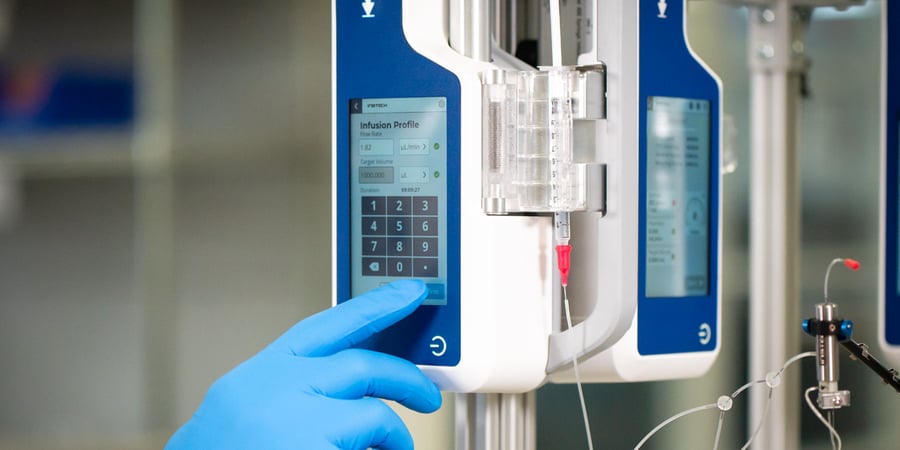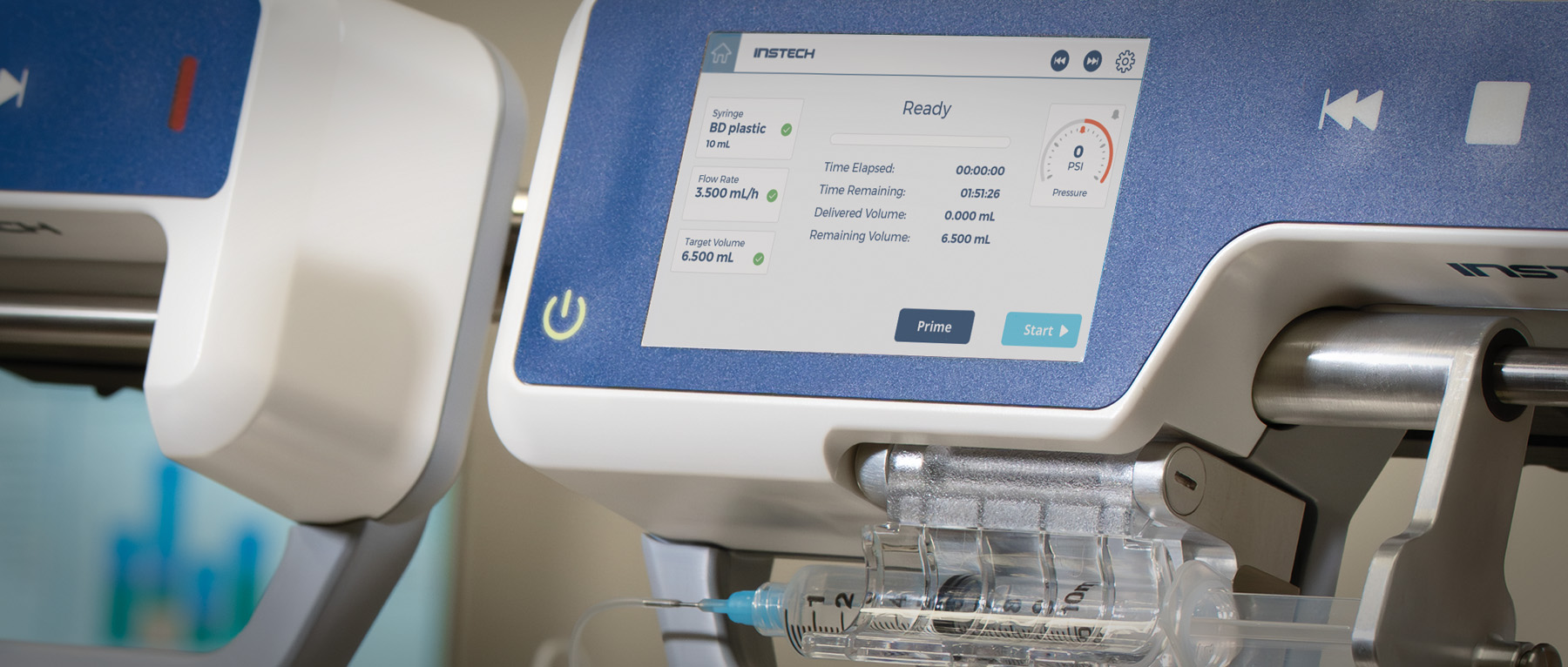
Typical flow rates for applications like mouse infusion, microdialysis and rodent intrathecal dosing are 0.1-20 µL/min. In theory, syringe pumps are among the best types of pumps for accurate low flow rates. In this blog post, the third in our series on syringe pump accuracy, we will look at how these pumps perform in practice.
Historically, laboratory animal researchers have had a choice between general purpose industrial syringe pumps which cover a huge range of flow rates but have no safety features, and clinical pumps with safety features but flow rates limited to those useful in human medicine.
Minimum Flow Rates
Clinical pumps can’t be programmed in µL (1/1000 of an mL), and typically have minimum rates of 0.01 mL/h (0.17 µL/min) with 1mL syringes. Some limit the flow rate to 2 decimals, so 0.01 mL/h = 0.17 µL/min, 0.02 mL/h = 0.33 µL/min, 0.03 mL/h = 0.5 µL/min, etc., undermining your ability to run these low-flow experiments with any precision.
Furthermore, the Baxter AS50 pump has an accuracy specification of ±3% or ±.007in of travel, whichever is greater. .007in is equivalent to 3.1 µL with a 1mL syringe, so if you pumped for 15 minutes at 0.01 mL/h your expected volume would be 2.5±3.1 µL, a potential error of more than 100%.
For these reasons, human-use pumps are not useful in low-flow animal research applications.
|
Pump |
Type |
Minimum flow rate with 1mL syringe |
Can it pump at 0.1 µL/min? |
|
Clinical |
0.01 mL/h |
|
|
|
Baxter AS50/SAI 3D |
Clinical |
0.01 mL/h |
|
|
Industrial |
0.16 µL/h |
||
|
Industrial |
0.07 µL/h |
|
|
|
New Era NE-1000 |
Industrial |
0.7 µL/h |
|
|
Chemyx Fusion 100-X |
Industrial |
0.32 µL/h |
|
|
Lab animal |
1 µL/h |
|
Smoothness of Flow
The other important concept in low flow applications is the smoothness of flow. We think of a pump pushing a plunger at a steady rate, but in fact it is moving in small discrete steps as the motor rotates with small tics like a second hand. The size of these steps is the step resolution. The smaller the step, the smoother the flow.

Benefitting from advances in stepper motor designs, the new Instech pump has one of the smallest step resolutions, and therefore smoothest flow, of all laboratory syringe pumps.
|
Pump |
Type |
Step Resolution |
Seconds per step at 0.1 µL/min |
|
Harvard Apparatus 11 Elite |
Industrial |
0.069 µm |
0.7 |
|
Harvard 11 Elite Pico Plus |
Industrial |
0.031 µm |
0.3 |
|
New Era NE-1000 |
Industrial |
0.212 µm |
2.2 |
|
Chemyx Fusion 100-X |
Industrial |
0.098 µm |
1.0 |
|
Instech P400 |
Lab animal |
0.020 µm |
0.2 |
Volume vs Time for Various Pumps Set to 0.1 µL/min with 1mL Syringe

Smoothness of flow is important for drug delivery - after all, you are using a pump to avoid the impact of sudden boluses. It’s critical for microdialysis which depends on a smooth flow for proper function of the membrane. And it can impact accuracy if there is a long time between pulses.
Note that while other industrial pumps have lower minimum flow rate specifications than the Instech pump, they achieve this by cranking up the time between steps to what we feel is an unreasonable level. For example, to achieve its 0.07 µL/h rate the Harvard Pico Plus pump is moving only once every 27.5 seconds. At this rate it would take 1.6 years to empty the 1mL syringe. Instech has set its minimum flow rate with a 1mL syringe to 1µL/h, a rate at which the flow is still somewhat smooth, with 1.2 seconds per step. It would still take 41 days to empty the 1mL syringe.
If you do need to infuse at these extremely low rates, consider using the smallest Hamilton microliter syringe that holds the volume you want to infuse. The syringes are expensive and need to be cleaned after use, but you will have greater accuracy and smoother flow. Most laboratory syringe pumps, including the new Instech pump, can handle Hamilton syringes. Clinical pumps cannot.

